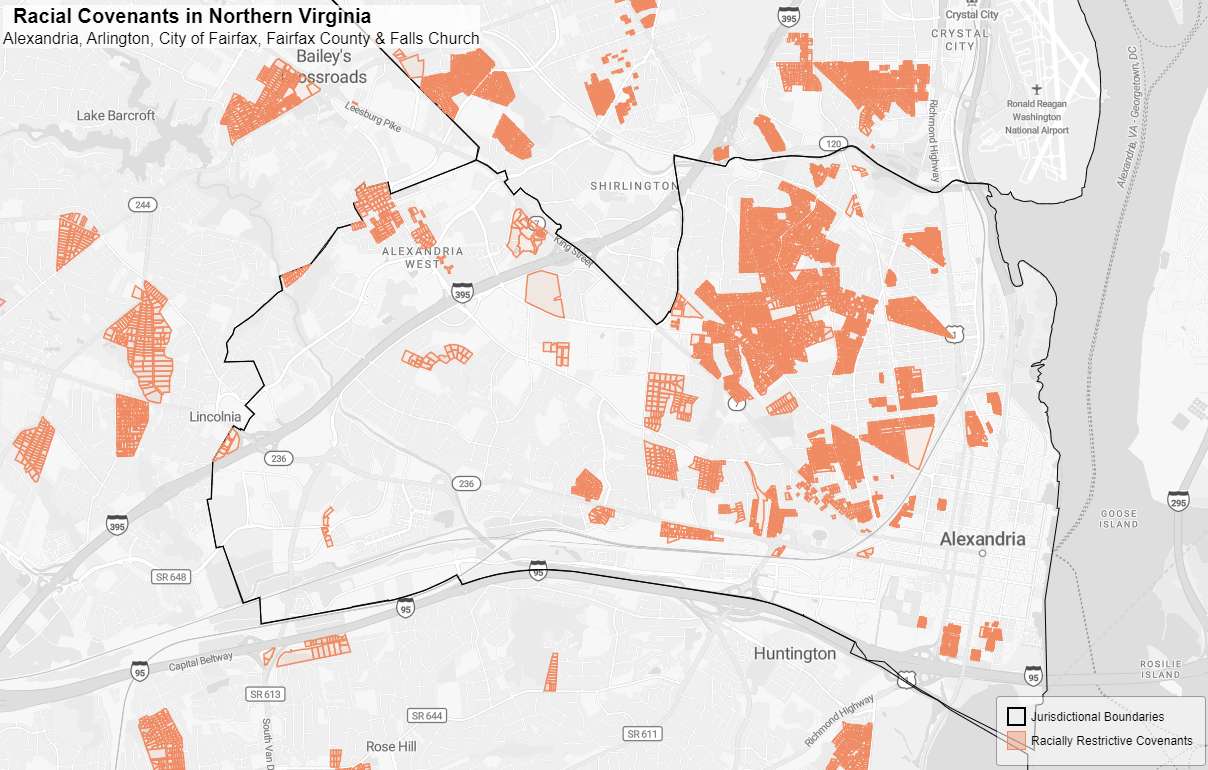
Alexandria’s history with racially restrictive covenants was a major topic during the Zoning for Housing/Housing for All debate last year, and a new interactive map shows the location of those covenants around Alexandria and surrounding localities.
ARLnow reported that the new interactive map comes from researchers at Marymount University. Many of the covenants listed on the map exclude “any person not of the Caucasian race.”
Those covenants were no longer enforceable under the 1968 Fair Housing Act, though they still remain on the books in some places in Alexandria.
Most of the covenants were created between 1920 and 1950. In Alexandria, nearly all of Rosemont and North Ridge were under racial covenants, as well as much of Del Ray.
In Alexandria, those covenants range from Mount Ida Groves’ covenant created in 1910 up to Malvern Hill, which approved a racial covenant in 1961 — only seven years before those covenants were made illegal.
One of the lead researchers for Documenting Exclusion & Resilience project is Krystyn Moon, a University of Mary Washington historian who also wrote up a report last year for the City of Alexandria on racially restrictive covenants in Alexandria.
“In 1912, Rosemont became the first subdivision in Alexandria to include racial restrictions on specific lots,” Moon wrote. “A year later, an unnamed development on Oronoco, Fayette, Princess, and Payne Streets in the Uptown neighborhood included similar language in its deeds. George Washington Park, which Alexandria annexed from Fairfax County in 1915, had restrictions as early as 1909.”
Moon’s report also found that some of the properties that implemented white-only covenants were purchased from local Black residents.
According to the report:
The practice of purchasing African American property and converting it into white-only subdivisions occurred periodically in Alexandria too. One section of Beverley Hills included thirteen acres owned by Hampshire Fractious and his family who had fled to Alexandria during the American Civil War. In 1903, the property was sold at auction, almost twenty years after Fractious’ death. While his son-in-law, John T. Bailey, tried to purchase it, Charles C. Carlin, an Alexandria-based lawyer and future congressman, outbid him. Fractious’ home, it is speculated, was used as the real estate office for the Beverley Hills subdivision by its developer, Don A. Loftus [Permanesque Homes, Inc.]. It was later incorporated into the development and still stands today.
Despite their willingness to purchase African American property, white developers believed that building subdivisions in proximity to African American neighborhoods adversely affected property values for white, middle and upper-class families.

